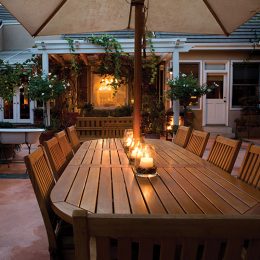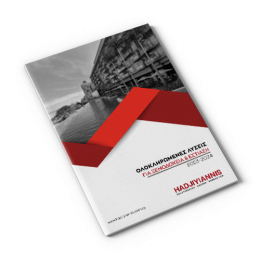Postmodern architecture is less serious than the modernist predecessor and has a playful ironic tone.
POSTMODERN ARCHITECTURE, 1970s-1990s
Postmodern architecture is less serious than the modernist predecessor and has a playful ironic tone. It was intended to be warm and funny; the buildings have individual characteristics, a reaction to modernism which was seen as cold and soulless. Modernism was borne out of austerity and Postmodernity was its antithesis. Postmodern architecture did not imitate local styles and as a result buildings tend to be distinctly different from their surroundings.
The Trafford Centre in Greater Manchester is a good example of Postmodern architecture; it references Roman and Greek sculptures, it has Neo Classical columns and a dome ceiling that resembles St Paul’s Cathedral. Shapes and styles are eclectic with influence taken from all over, historic styles are mixed, colour is expressive and the result is non conformist. The style has been surrounded by controversy, some critics object to the extravagant approach of Postmodernity, whereas others see that it has challenged previous notions of architecture and is unapologetic for daring to be different.

KEY DESIGN FEATURES:
- Colour
- Unique Design
- Historical References
- Variety Of Materials
- Eclectic Design
DECONSTRUCTIVISM, 1980s-EARLY 21ST CENTURY
Deconstructivist architecture makes a statement and challenges traditional perceptions of architecture. Deconstructivist structures do not follow rational geometry and as a result the exterior is distorted.
Chaos is created through manipulation of the skeletel structure. Advancements in both materials and aerospace technology have enabled these designs to become a reality. The New York Museum of Modern Art staged a show “Deconstructivist Architecture” and featured designs from architects such as Frank Gehry and Zaha Hadid. Some architects have detached themselves from the term but it is still used as a definition. Architecture today focuses on materials rather than paint finishes and so a colour palette is not included in this and the following category.

KEY DESIGN FEATURES:
- Fragmentation
- Non Rational Geometry
- Surface Manipulation
- Form Follows Function
CONTEMPORARY ARCHITECTURE, 2000 TO PRESENT
Sustainability and technology are key features in contemporary architecture, buildings are designed to be environmentally friendly and highlight green credentials using the latest technology to do so. Futuristic materials allow forms to move far away from the modern cube and instead become fluid undulating lines.
The use of lightweight tubular materials and advanced 3D design packages allow more freedom in realising concepts. Structures have flexible boundaries that blur the division between inside and outside and maximise the qualities of natural light and ventilation. Engineering is being placed on the outside to increase the potential space internally.

KEY DESIGN FEATURES:
- Irregular Forms
- Ecological Design
- Glass Walls






